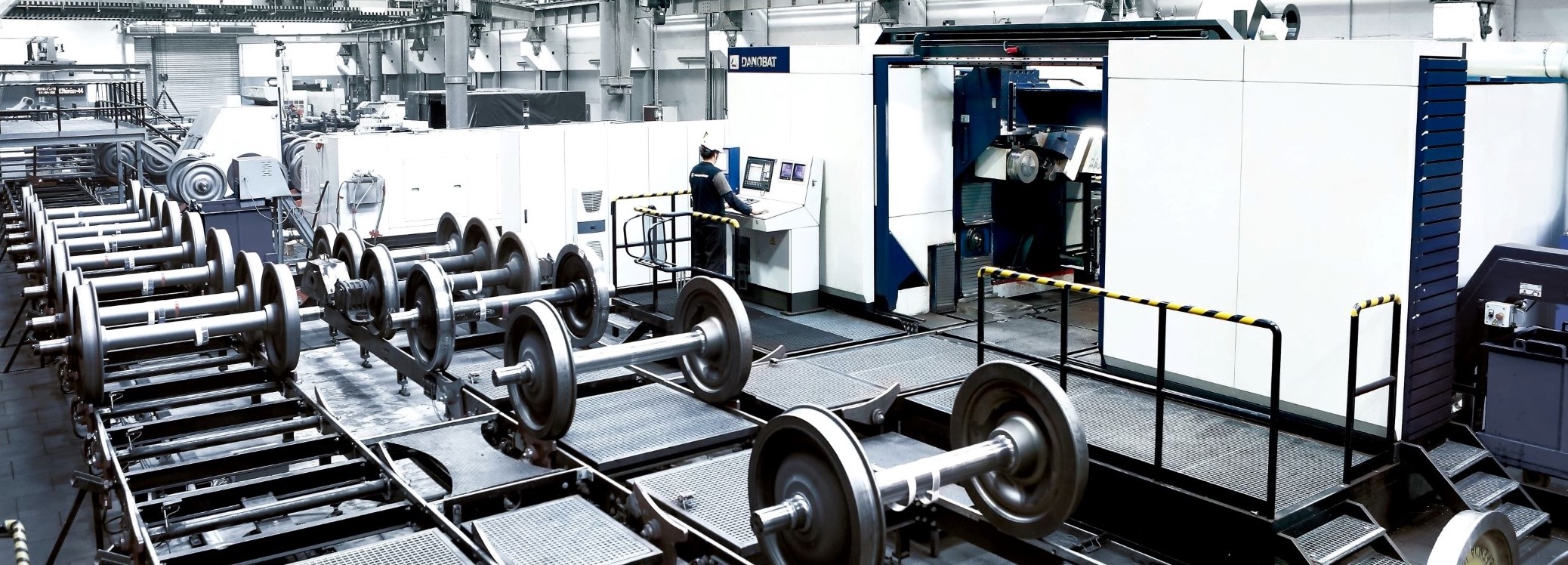The Benefits of Ultrasonic Wheel Testing
Railway wheels are subjected to contact stress which is influenced by wheel load, wheel profile and bogie steering. Over time these contact stresses damage the contact point between the wheel tread and rail which can lead to rolling contact fatigue. Usually beginning under the surface of the tread, rolling contact fatigue can progress to a point where pieces of wheel material fracture and break off during locomotion.
This is known as spalling.
As a preventative measure to spalling, wheels are returned to depots for profiling, or turning, where material is cut to restore the wheel profile and to remove any visible defects. The minimum amount of material is cut from the wheel when restoring the profile as to increase the wheel life, extending the time required before rediscing the wheel.
However, this is purely a superficial solution, meaning that sub surface defects may still exist.

Image: Spalling on rolling stock removed during turning. Internal damage to wheels remain unconsidered in Australian depots.
Senior Rollingstock Engineer, and Freightquip employee, Tom Budniak believes the untested contact stress of wheels is a contributing factor to high rates of wheel failure in Australia.
“In my experience we did see a lot of wheels, approximately 5%, replaced within 6 months after reprofiling – which I surmise was due to these sub surface defects not being removed,” Budniak comments.
When a wheel becomes unusable it needs replacement, which can be a time-consuming and expensive affair. Every unplanned wheelset removal requires a train stoppage, a shunting vehicle sent out to the train, a trip to the workshop and then the train shunted back onto the trail. Overall, this can cost more $10,000 per event.
Budniak’s idea of underlying contact stress contributing to reduced wheel life comes from his experiences in the USA.
“I went on a tour of American wheel shops in 2009 and observed the process of wheel ultrasonic testing after wheel turning. From what I recall the rejection rate after profiling was 3%. When rejected a wheel would be profiled again. This meant double handling of the wheelset.”
World-leading rollingstock suppliers Danobat, who also conduct ultrasonic testing, reported a similar 5% wheel rejection rate post-turning. Without such testing, these wheels would not be rebuffed, and could explain the similar percentage in Australian train wheel failure after profiling.

Image: Danobat rail rolling stock depot.
“When I returned from this trip I read the AAR [Association of American Railways] manual and read that the process of ultrasonic testing was now a mandatory requirement in the USA, applying to all wheelshops in America. Many other overseas railways use these standards either in entirety or as a basis for their own standards. I do not know of any wheelshop in Australia that currently does post turn ultrasonic testing of wheelsets.”
There has been a growing tendency for Australian freight trains to opt for high axle loads to increase operational efficiency; more weight per load allowing for larger amount of goods transported at one time, and fewer trips required overall.
Axle loads along the northern Western Australia railways have been found to be up to 40 tonne, in comparison to the 23 tonne loads on the intermodal interstate network, or the 30 tonne loads on the Hunter Valley coal network.
Budniak ties these higher load weights with increased amounts of contact stress, which could be flying under the radar of Australian locomotives, contributing to the premature spalling.
“I suspect that any railway operating at greater than 25 tonnes axle load has an issue with early removal of wheelsets due to sub surface defects not properly removed during profiling.”
Freightquip are now in the process of working with wheelshops to include ultrasonic testing, rejecting or re-profiling wheels where defects are detected, and then monitor wheelset life spans.
“A difference should be demonstrated in less than 6 months,” says Budniak. “By adding ultrasonic testing as part of standard wheelshop maintenance, operators will be confident in the reliability of their wheelsets, and needless costs and time associated with spalled wheels can be avoided”.
Interested in partnering with Freightquip for ultrasonic testing? Contact us at here.
